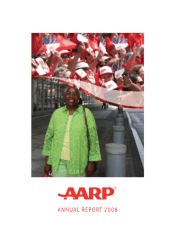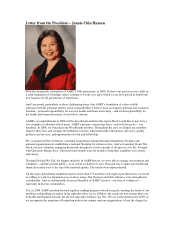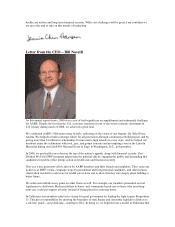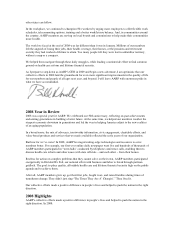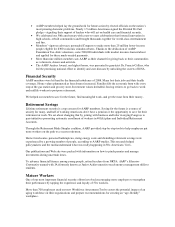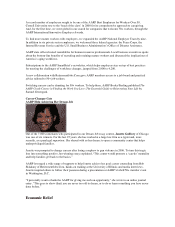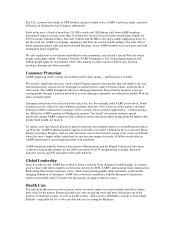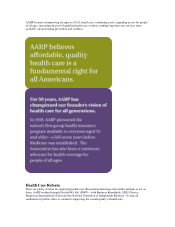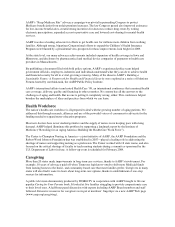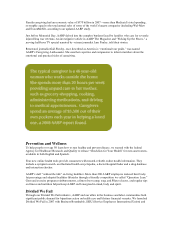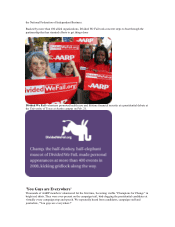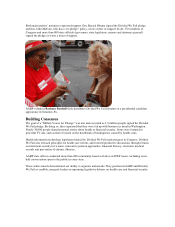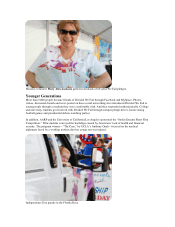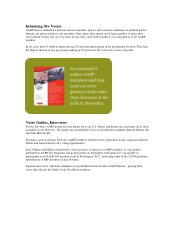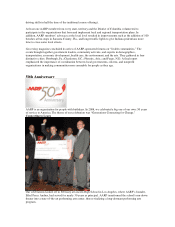AARP 2008 Annual Report Download - page 7
Download and view the complete annual report
Please find page 7 of the 2008 AARP annual report below. You can navigate through the pages in the report by either clicking on the pages listed below, or by using the keyword search tool below to find specific information within the annual report.The U.S. economy was shaky as 2008 dawned, and got steadily worse. AARP’s advocacy made a positive
difference in shaping the way Congress addressed it.
Early in the year, a flood of more than 211,000 e-mails and 3,800 phone calls from AARP members
persuaded Congress to make more than 25 million low-income Social Security beneficiaries eligible for
$300 economic stimulus rebates. Our staff worked with the IRS to develop a simple application form. To
get the word out, AARP’s newspaper, magazines and Web site carried regular updates. Our state offices
made automated phone calls and held town-hall briefings. Every AARP member received a post card with
information about eligibility.
We also reached out to low-income individuals in the community, and created a special Web site where
people could apply online. Volunteers from the AARP Foundation’s Tax-Aide program helped a half-
million people apply for the stimulus rebate, thus making it a little easier for them to pay for food,
medicine, housing and other essentials.
Consumer Protection
AARP ramped up efforts to help our members protect their money—and their peace of mind.
We scored a significant advocacy victory when Congress passed a housing law that will improve the way
older homeowners can use reverse mortgages to tap their home equity for home repairs, medical bills or
other needs. The AARP Foundation’s Reverse Mortgage Education Project had its strongest year ever,
serving people through a national network of reverse mortgage counselors, an information-packed Web site
and a consumer guide.
Consumer protections were achieved at the state level, too. For example, until AARP got involved, South
Carolina was one of the few states without an identity theft law. Now it has one of the nation’s strongest.
Starting in 2009, residents there can place or lift a security freeze on their credit history—without paying a
fee. Efforts by AARP members in Michigan to monitor “free lunch” investment seminars spread
nationwide among AARP volunteers, who worked to ensure that the products being promoted helped older
people build wealth, not drain it.
As energy costs skyrocketed, practical energy-saving tips were popular features in our publications and on
our Web site. AARP helped persuade Congress to provide a record $5.1 billion for the Low-Income Home
Energy Assistance Program. And our state advocates went to bat for lower energy costs, such as in Florida,
where the state’s largest utility scaled back its rate increase request by nearly $1 billion weeks after an
AARP representative raised tough questions with regulators.
AARP teamed up with the National Association of Broadcasters and the Digital Television Conversion
coalition to help people prepare for the 2009 conversion of all TV programming to digital. Research
indicates viewers aged 50 and older will be affected most.
Global Leadership
Since its earliest years, AARP has worked to foster a rich and lively dialogue on global aging. A common
goal we share with other countries is retirement security. In 2008, AARP’s international team continued our
Reinventing Retirement conference series, which looks at demographic shifts around the world and the
changing definition of retirement. AARP also co-hosted a conference with the European Commission,
which convened EU and U.S. leaders for discussions on aging workforce issues.
Health Care
The current health system costs too much, wastes too much, makes too many mistakes and often returns
little value for the money. Runaway health care costs are pricing more and more Americans out of the
promise of financial security, as well as health security. And access to affordable coverage is increasingly
difficult—especially for 50- to 64-year-olds who are too young for Medicare.

